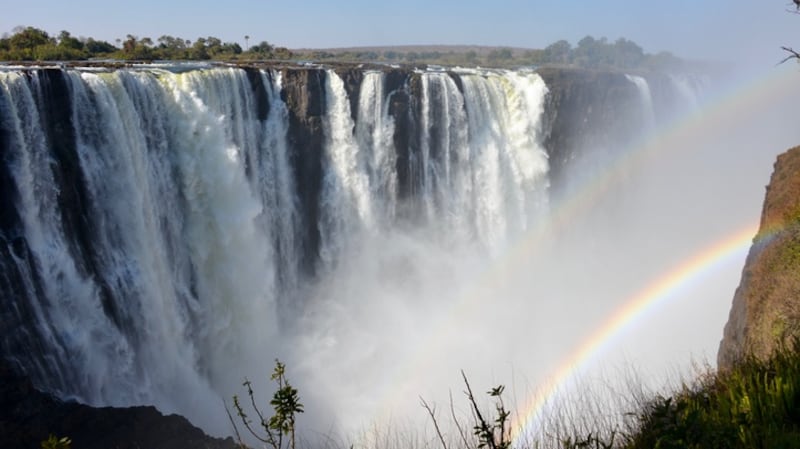The worst drought in a century has slowed southern Africa’s Victoria Falls to a trickle, fuelling fears that climate change could kill one of the region’s biggest tourist attractions.
While the flow of the Zambezi river over the falls, known locally as Mosi-oa-Tunya, slows during the dry season, officials said this year had brought an unprecedented decline in water levels.
“In previous years, when it gets dry, it’s not to this extent. This (is) our first experience of seeing it like this,” said Dominic Nyambe, a seller of tourist handicrafts.

“It affects us, because ... clients ... can see on the Internet (that the falls are low) ... We don’t have so many tourists.”
As world leaders gather in Madrid for the Cop25 to discuss ways to halt catastrophic warming caused by human-driven greenhouse gas emissions, southern Africa is already suffering some of its worst effects – with taps running dry and about 45 million people in need of food aid amid crop failures.
The falls span the border between Zimbabwe and Zambia, and both countries have suffered power cuts as they rely heavily on hydropower from the Kariba Dam upstream from the falls.
Data from the Zambezi River Authority shows water flow at its lowest since 1995, and well under the long term average. Zambian president Edgar Lungu has called it “a stark reminder of what climate change is doing to our environment”.
Yet scientists are cautious about categorically blaming climate change. There is always seasonal variation in levels.
Harald Kling, hydrologist at engineering firm Poyry and a Zambezi river expert, said climate science deals in decades, not necessarily years, “so it’s sometimes difficult to say this is because of climate change because droughts have always occurred”.
“If they become more frequent, then you can start saying, ok, this may be climate change,” he added.
He said early climate models had predicted more frequent dry years in the Zambezi basin, but that “what was surprising was that it (drought) has been so frequent” – the last drought was only three years ago. As the river gets hotter, 437 million cubic metres of water are evaporating every second, he said.












